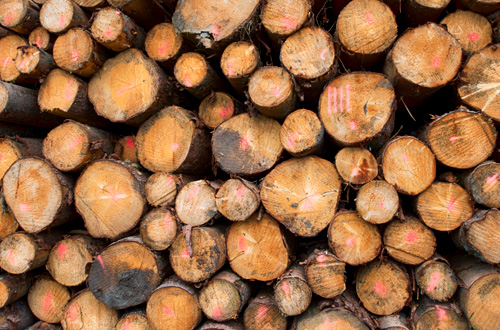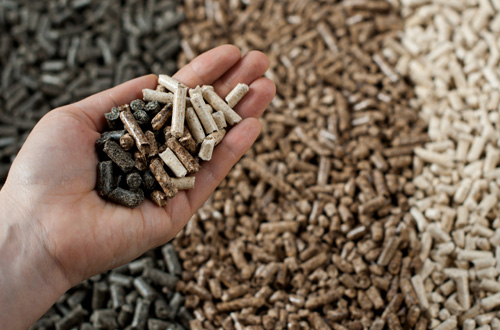What is Bioenergy
“Bioenergy” is use of any organic material, such as forest thinnings, residues, agricultural waste or urban wood waste, to generate heating, cooling and/or electricity. Many independent power producers across the United States and Canada produce electricity for the grid using bioenergy. Hospitals, college campuses, school districts and government buildings also use bioenergy for heat and electricity. Thousands of American homes and businesses have installed stoves and other appliances powered by wood pellets, reducing their heating costs. Working farms and other businesses with organic waste products recycle their “leftovers” to power or heat their facilities.
In addition to serving as a domestic energy source, bioenergy is responsible for sustaining tens of thousands of jobs, many of them in rural communities where they are most needed. Bioenergy’s many stakeholders work closely together to keep American forests healthy and put organic byproducts like forest trimmings, industry byproducts and agricultural residuals to good use.
Bioenergy comes in many forms, including:

Biomass Power
Power plants across the country use wood residues as a fuel to generate electricity. These plants are often found in heavily forested areas with a local timber industry. In addition to wood chips, they also use other organic materials that have a low value and cannot be used in the forest products market, such as urban wood waste, which in many cases would be landfilled if not used for bioenergy. Biomass power facilities can be large enough to power tens of thousands of homes and businesses in an area, or small enough to power a college campus.
Learn more at www.usabiomass.org

Residential Heating and Other Appliances
Pellet mills, also located in heavily forested areas, produce a small, densified product called wood pellets that can be used as fuel for residential home heating stoves and other appliances. Wood pellets can also be used as a fuel source to heat larger areas like school campuses or even federal buildings like the Washington County Courthouse in Barre, Vermont.
Learn more about residential pellets at the Pellet Fuels Institute. Visit the Hearth Patio and Barbecue Association to learn more about pellet appliances.
What is biomass?
Biomass is organic solid matter. If you’re outdoors, biomass is trees, grass, leaves, even dirt. If you’re inside, biomass could be wood, food scraps, human waste.
What is biomass energy?
Biomass energy is energy derived from organic solid matter.
How?
Biomass energy providers typically collect waste wood, agricultural residues, nut shells, and similar “feedstocks” that they feed into an air-tight steel chamber where it is burnt at a very high temperature and the resultant energy is converted into renewable electricity.
Is that good for the environment?
Biomass power plants use a series of advanced filtration technologies to ensure that they do not emit smoke or any harmful emissions into the atmosphere. By regulation, biomass energy plants have a stack, but the only thing coming out of it is steam. If smoke or carcinogens of any sort are detected in the stack by industry-standard sensors, work will stop and any leaks will be identified and addressed.
What is renewable electricity?
Renewable electricity is the same as any electricity, except it is derived from renewable materials (in this case biomass). When you flip a light switch or charge your phone, you can’t tell if the electricity is from a renewable source like biomass, or from fossil fuels (which have a negative environmental impact).
What are the benefits of biomass power?
Biomass energy companies take organic matter that has no other marketable purpose and change its fate from rotting in a landfill, getting burnt in a giant pile in the woods, or just left on the forest floor as kindling for wildfires. Instead, these feedstocks are collected and converted into electricity that does not require coal mining or other actions that create new carbon emissions.
In addition, in wildfire prone areas of the country biomass power operations literally save lives. When waste wood is collected from forests, vital fuel that feeds horrific fires is removed from the equation.
Also, biomass power companies typically operate as the center of a 75 mile radius from which biomass feedstocks are sourced. This creates an economic and energy ecosystem that circularly supports many rural American communities. Forest or agriculture waste is collected (local jobs), it is chipped and loaded into a big truck (local jobs) that are driven to the local biomass power facility (local jobs), where the truck’s contents are offloaded and processed through the biomass plant (local jobs), thereby creating renewable electricity that is placed on the local electric grid and used locally. No other form of energy hits the nexus of local and environmentally responsible like biomass power.
What are the downsides?
Almost all criticism of biomass energy is a result of not understanding what it is and what it isn’t.
First, biomass energy companies don’t cut down trees to get fuel for their power plants. Yes, they use wood, but it’s waste wood. When trees are harvested in forestry operations, the tops and limbs are of no use – they are too small for use in construction or furniture. They are typically burnt or taken to a landfill. But sometimes they are left on the forest floor to rot or catch fire. That’s the wood biomass energy companies use. Similarly, when natural disasters like tornadoes or hurricanes leave a path of destruction in their wake, biomass companies collect that mangled waste wood and convert it into electricity.
Second, biomass energy companies are often inaccurately associated with export pellet companies. There is a significant market in Europe and other parts of the world for wood pellets that are used for home heating. The wood pellets are created by pulverizing wood into a sawdust, and then modifying it into a solid pellet shape. This process tends to produce sawdust that can be difficult to contain. Then the pellets are transported to a port and loaded onto shipping containers for other parts of the world. The carbon footprint for all of the logistics is massive and cancels out any other benefits that may be associated with pellets. Compare that biomass power companies who work with wood chips (think fresh mulch) that are used within 75 miles of where they are collected. It’s a massive difference.
What’s the outlook for biomass energy?
It’s tough. Biomass energy companies provide a valuable environmental service and are part of a national energy solution that prioritizes renewables, but execution is comparatively expensive. Solar panels and wind turbines are stationary and though they have workforce impacts, biomass power is more expensive to produce because it requires more boots on the ground and in many cases biomass energy companies are bound by long-term contracts with local utilities that are less profitable than what solar and wind have. Biomass energy companies are constantly on the edge of potential shut-down. When they close, local jobs are lost and local renewable energy is sometimes entirely eliminated. In addition, methane emissions from unused waste wood increase, as does the threat of wildfires.





